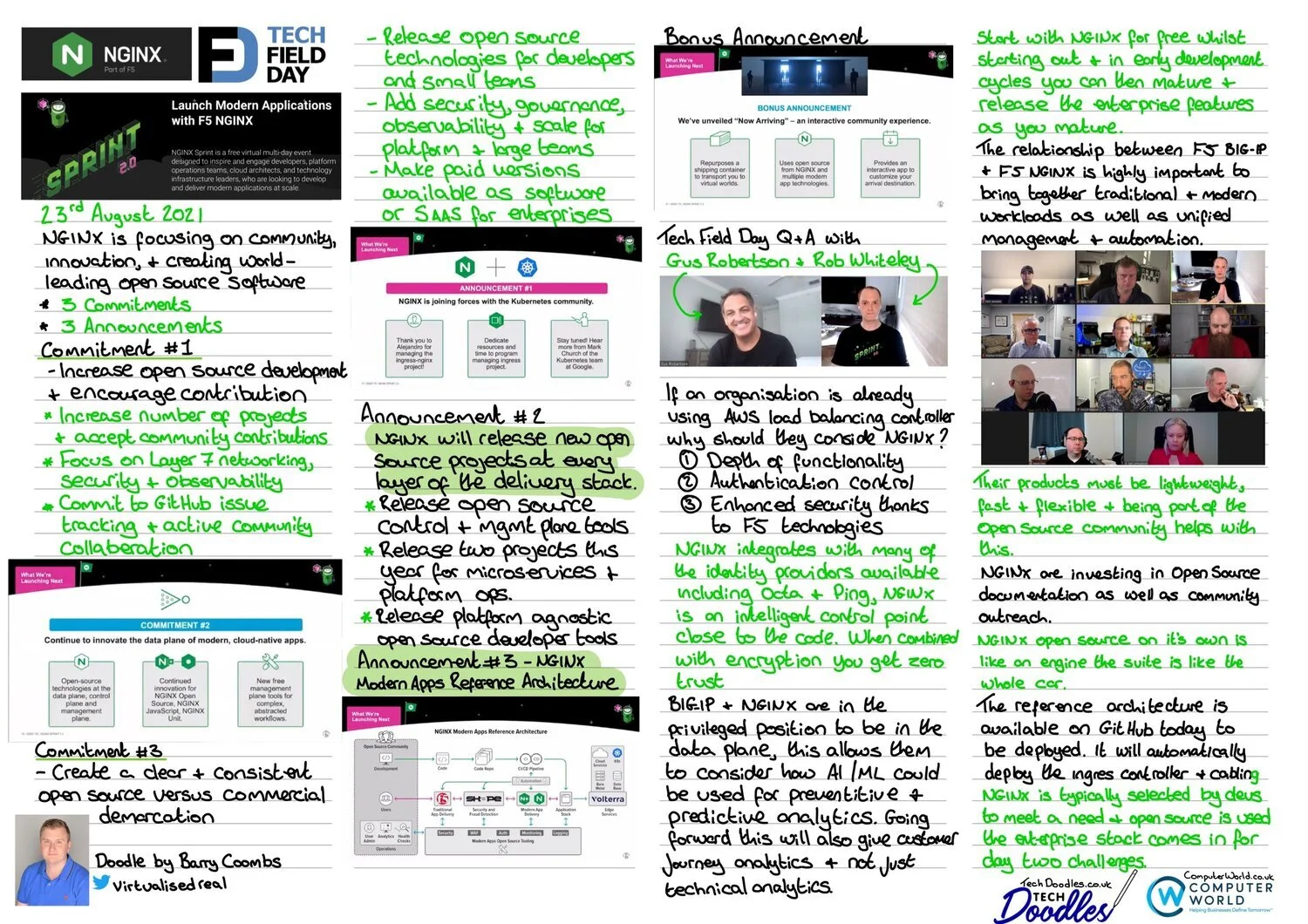As described in my earlier blog post I have been attending F5 NGINX Sprint this week, this blog post focuses on the second half of the initial day which looked at the announcements, commitments as well as a Q&A with Gus Robertson and Rob Whiteley.
During the first day of the conference, there were three commitments and three (and one bonus!) announcements.
These were as follows
Commitment 1
Increase open source development and encourage community contribution
Commitment 2
Continue to innovate the data plane of modern, cloud-native applications
Commitment 3
Create a clear and consistent open-source vs commercial demarcation
Announcement 1
NGINX is joining forces with the Kubernetes community
Announcement 2
NGINX will release new open-source projects at every layer of the delivery stack
Announcement 3
NGINX Modern Apps Reference Architecture
Bonus Announcement
NGINX unveiled a new interactive community experience that is now arriving.
Thoughts Regarding the Announcements and Commitments
The commitments and announcements were firmly focused on the community, whether that is the user community or the wider open source community. Learning about NGINX’s history it is clear that their commitment to open source and the community has been core to their business, now part of F5 they are wanting to renew this commitment and demonstrate how being part of F5 means they are able to dedicate more time, people and money to the community and open source programmes which undoubtedly would have been a concern for some after acquisition.
The Modern Apps Reference Architecture (MARA) is aimed to help people spin up a complete and fully operational microservices architecture quickly and easily. MARA integrates open source solutions from NGINX and partners that are pre-wired and preconfigured meaning it is fully production-ready. This means that DevOps teams can easily access MARA from the GitHub repo and deploy it in production with minimal frustration.
You can access the MARA GitHub Repo here.
Tech Field Day Q&A with Gus Robertson and Rob Whiteley
To finish the day I was lucky enough to be part of the Tech Field Day panel for the Q&A with Gus Robertson and Rob Whiteley. I highly recommend watching this session when available and I will update this post with the link. During this session, there were some great questions from the delegates looking at the technology, community, open-source commitment as well as the commercial model and why people should choose to opt for a paid commercial model at the appropriate time. I was particularly impressed with how NGINX has not only managed to appeal to the operation teams via their commercial offerings that meet day 2 needs around scale, performance and security as well as appealing to developers with the open-source offerings and community engagement.
I was particularly interested in the possibility of AI and ML services being developed in the future leveraging the position of the NGINX technologies in the data plane. They spoke about looking to leverage this position in the future in conjunction with AI and ML to offer, predictive analytics to help scale and grow or prevent issues but also to offer business insights regarding the customer journey based upon the insights they could see.
You can re-watch the sessions from NGINX Sprint 2.0 and find out more about the NGINX technologies at https://www.nginx.com

